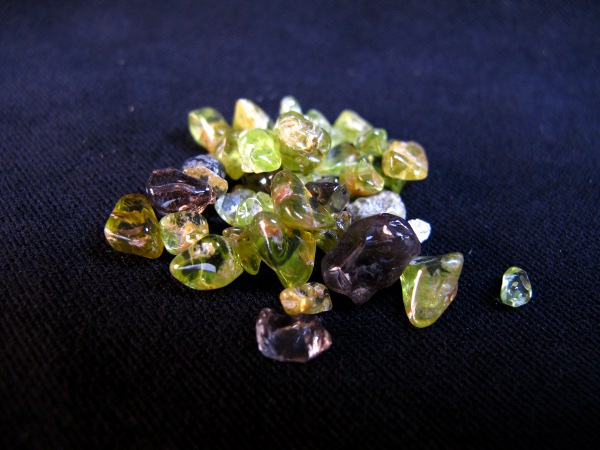Chemical Formula: Mg2SiO4-Fe3SiO4
Class: Silicates
Hardness: 6.5-7
Coloration: Green to pale yellow or brown
How to identify it/Unique Characteristics or Properties:
Olivine is a title for a group of minerals rich in iron and magnesium, named after their green to brown color like olives. Olivines are very common within the mantle of earth, and fairly common in the crust. However, it is usually tiny grains in the crust instead of large pieces. Olivine does not weather well, and often breaks down into serpentine.
There are many names for types of olivine. It is called forserite when it has high magnesium, and fayalite when it has a high iron content. When it is in large gem quality pieces it is called Peridot, and lots of little olivine crystals within another mineral is peridotite or dunite.
Where to find it in…
The Northwest: Montana
Other: China, Russia, Brazil, Australia, Norway, Pakistan
Past Uses: Gemstones
How it was Made: Formed in dry climates, and recently formed but hot rocks, such as new lava flows.
Interesting Facts: Olivine is sometimes found in meteorites as well.

